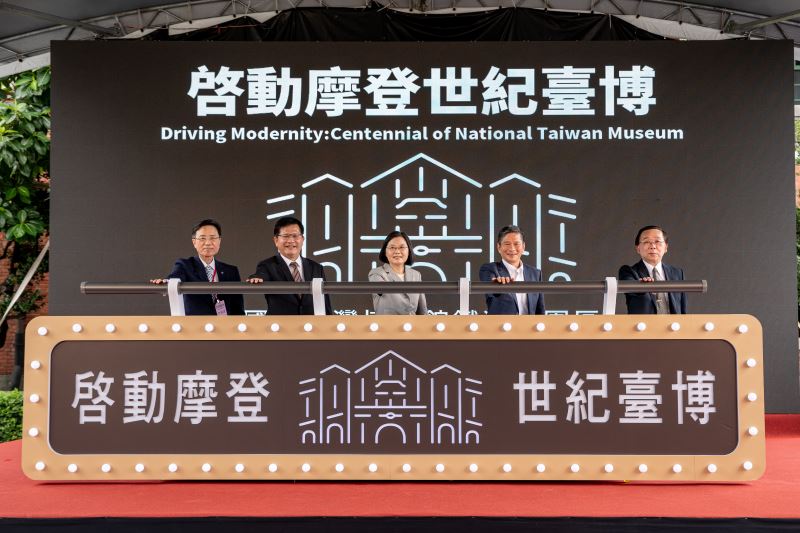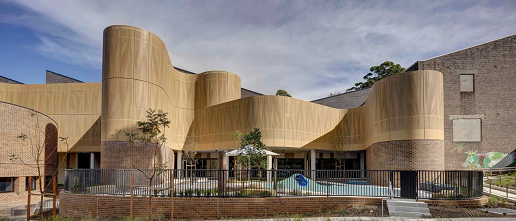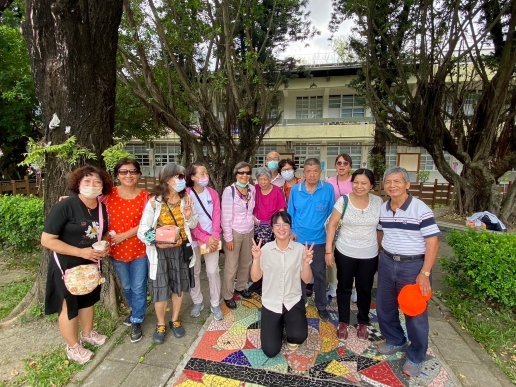 (Source: Ministry of Culture)
(Source: Ministry of Culture)
President Tsai Ing-wen, Minister of Culture Lee Yung-te, and Minister of Transportation and Communications Lin Chia-lung attended the inaugural ceremony of the Railway Department Park on July 6, one day ahead of its official opening to the public. At the ceremony, they were joined by the architects and craftspeople whose expertise and dedication were so essential to the national heritage site's restoration.
The National Taiwan Museum Railway Department Park is one of four major venues that comprise the "Systems of Museums in Taiwan" network. Situated next to the North Gate of the old walled city of Taipei, the site was for seven decades the operating headquarters of Taiwan's railways from the Japanese era through the ROC's post-war period. In 2007, it was designated a national historic site, with the National Taiwan Museum given the responsibility of restoring it for use as a museum.
At the July 6 ceremony, President Tsai congratulated everyone involved in the past 16 years of hard work on finally seeing their efforts successfully come to fruition. The Railway Department Park occupies the site of the birthplace of Taiwan's industrial, scientific, and railway advancements. Even in the face of regime changes, it remained at the head of Taiwan's railway operations and management, bearing witness to a century of development and evolution on the island.
President Tsai offered special thanks to Yu Shyi-kun, who was premier at the commencement of the restoration work, and the staff of the Council of Cultural Affairs, the Ministry of Culture's predecessor. It is only with their support, she said, that Taipei's museum grid has been able to become today's reality.
Minister of Culture Lee Yung-te remarked that the opening of the Railway Department Park marks two tremendously important milestones in Taiwan's efforts to preserve cultural heritage. First, the "Systems of Museums in Taiwan" network now links the National Taiwan Museum, Land Bank Exhibition Hall, and Nanmen Park with the Railway Department Park to create a cluster of museums dedicated to the cultural development of Taipei City.
"Not only does this symbolize the state's renewed focus on culture, it will also provide effective insights [on Taiwan's railway history] for both international guests and our own future generations," he said. The second milestone is the cooperative efforts of the Ministry of Culture and Ministry of Transportation and Communications that facilitated the establishment of the National Railway Museum Preparatory Office, Lee added.
Minister of Transportation and Communications Lin Chia-lung noted that railways are an indicator of a nation's modernization; in the past, there the purpose of such networks was to provide public transportation services, while today, the focus has turned to railway culture, economy, and tourism.
With 2020 designated the "Year of Railway Tourism" in Taiwan, the Ministry of Transportation and Communications and the Ministry of Culture was granted a special budget last year from the National Development Council in hopes of creating "railway culture hotspots" across Taiwan.
These efforts include the Miaoli Railway Museum, Changhua Roundhouse, the Forest Railway in Chiayi, and the Hamasen Museum of Taiwan Railway in Kaohsiung, along with the Railway Technology Research and Certification Center which was approved by the Legislative Yuan last year. From the passionate development of railways to the humanistic modernization of Taiwan, an emerging Taiwanese consciousness has become a major attraction for international visitors to Taiwan.
The focus of the Railway Department Park's exhibits is modernity, with permanent exhibitions of Taiwanese railway culture, site history, and park renovation bringing together the historical background of the park and the historical architecture of the Railway Division of Taiwan Governor-General's Bureau of Transportation (also known as the Taihoku Railway Bureau).
In addition, the park has recreated scenes of urban Taipei's old scenes of diesel engines, electric locomotives, and EMUs, reflecting the third generation of Taipei railways from the 1970s and 1980s, when steam engines had been phased out but the undergrounding of the railway was still in the future.
Source: Ministry of Culture








